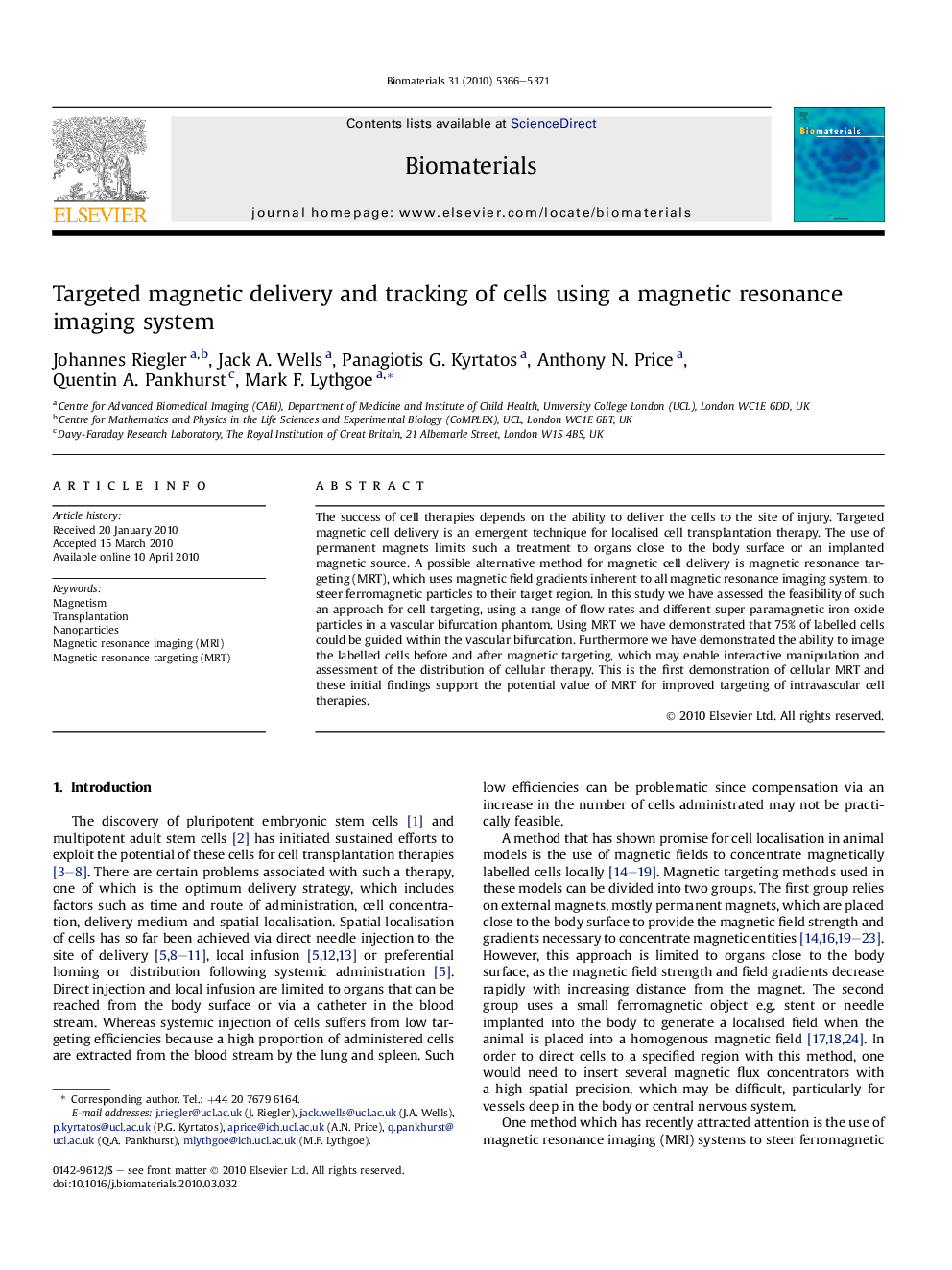| Article ID | Journal | Published Year | Pages | File Type |
|---|---|---|---|---|
| 8877 | Biomaterials | 2010 | 6 Pages |
The success of cell therapies depends on the ability to deliver the cells to the site of injury. Targeted magnetic cell delivery is an emergent technique for localised cell transplantation therapy. The use of permanent magnets limits such a treatment to organs close to the body surface or an implanted magnetic source. A possible alternative method for magnetic cell delivery is magnetic resonance targeting (MRT), which uses magnetic field gradients inherent to all magnetic resonance imaging system, to steer ferromagnetic particles to their target region. In this study we have assessed the feasibility of such an approach for cell targeting, using a range of flow rates and different super paramagnetic iron oxide particles in a vascular bifurcation phantom. Using MRT we have demonstrated that 75% of labelled cells could be guided within the vascular bifurcation. Furthermore we have demonstrated the ability to image the labelled cells before and after magnetic targeting, which may enable interactive manipulation and assessment of the distribution of cellular therapy. This is the first demonstration of cellular MRT and these initial findings support the potential value of MRT for improved targeting of intravascular cell therapies.
